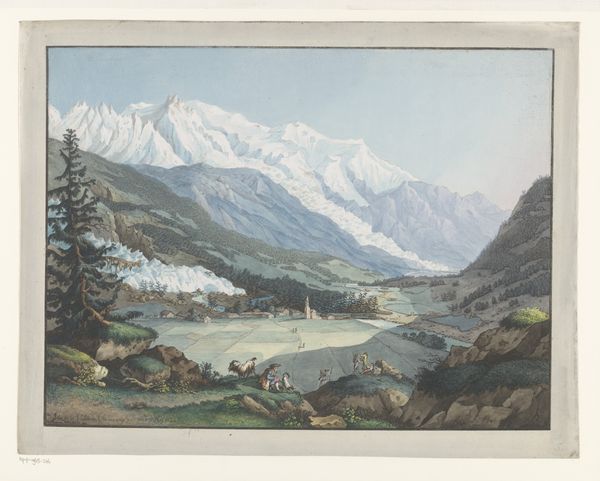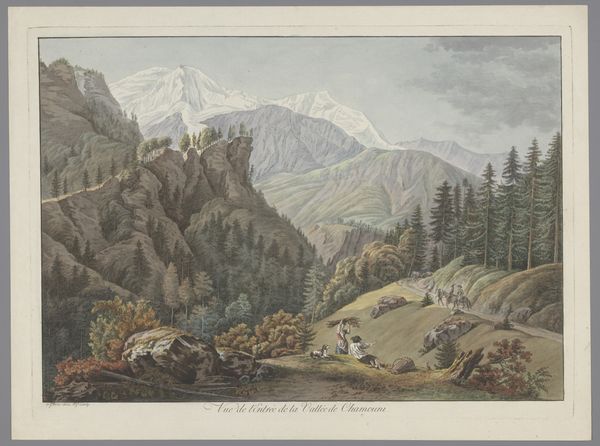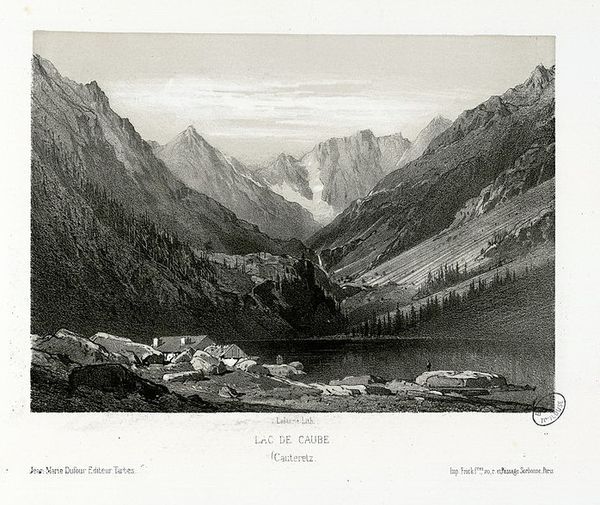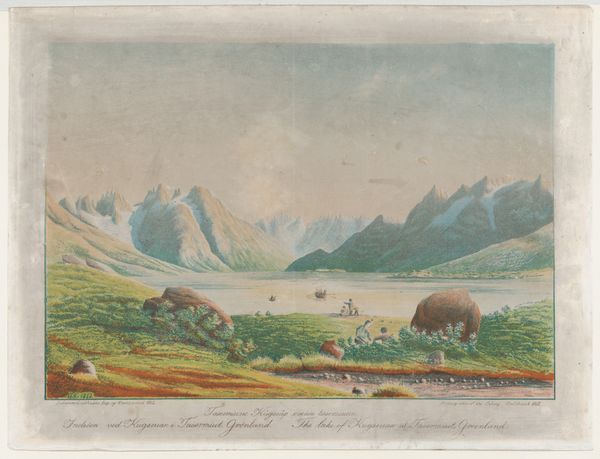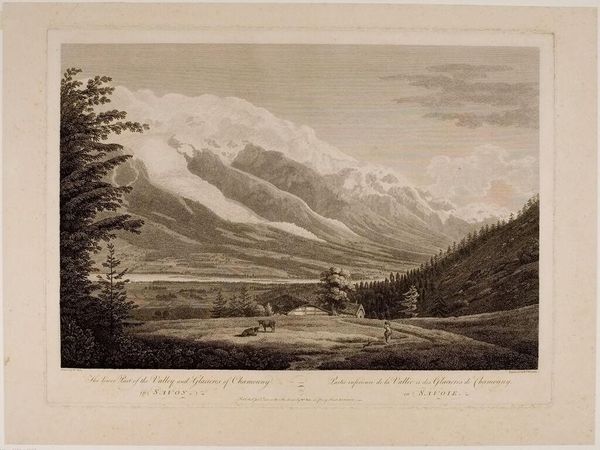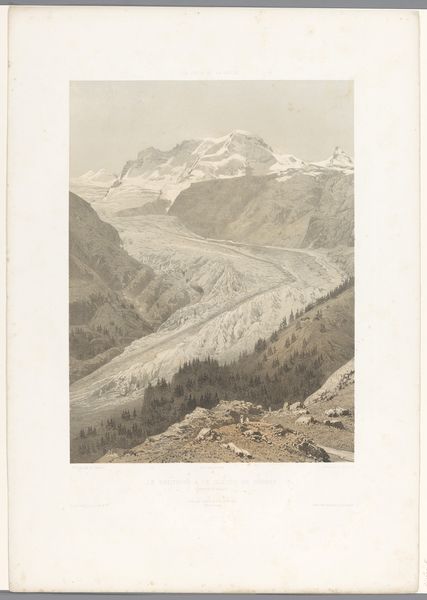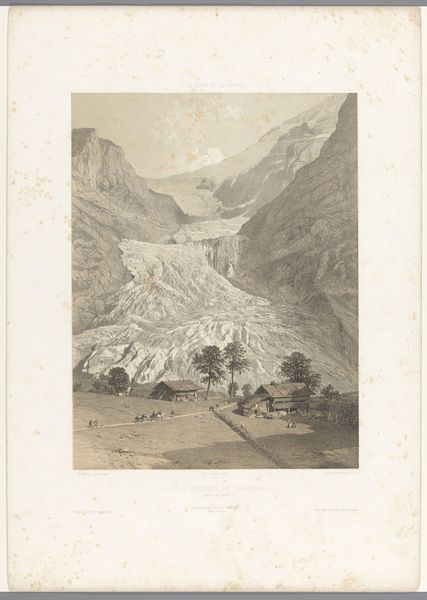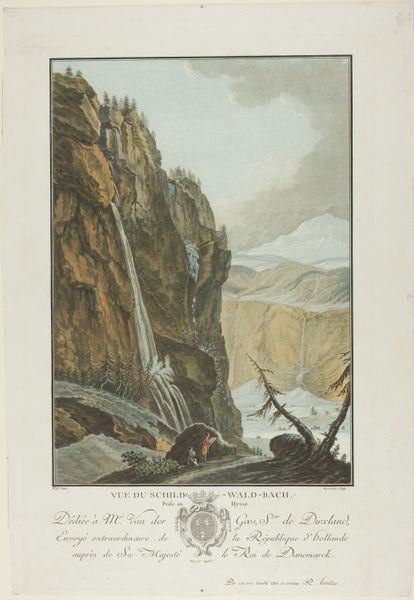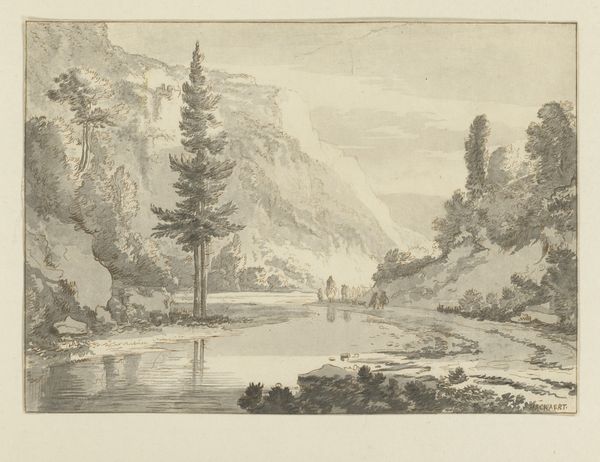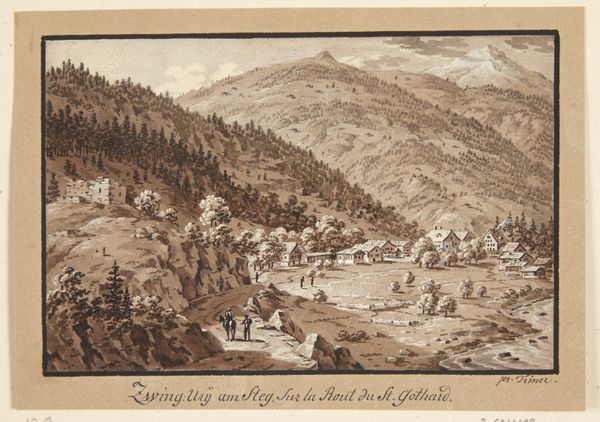
Dimensions: height 391 mm, width 534 mm
Copyright: Rijks Museum: Open Domain
François Guillaume Lardy produced this print of the valley near Chamonix, France, in the late 18th or early 19th century. Its picturesque style, with carefully arranged trees and idealized figures, speaks to the growing interest in landscape as a source of aesthetic and even spiritual experience. The sublime grandeur of the Alps became a popular motif during this period, reflecting a broader cultural shift. The print also offers a window into the development of tourism. The inclusion of figures casually enjoying the view suggests a growing leisure culture among the European middle classes and aristocracy who would visit such places. Lardy, like other artists of his time, played a role in shaping perceptions of landscape and tourist destinations. To fully understand its place in history, we can turn to travel literature, guidebooks, and other documents that tell us about how landscapes were perceived and consumed in this period. The meaning of art changes with time, shaped by the social and institutional contexts in which it is created and viewed.
Comments
No comments
Be the first to comment and join the conversation on the ultimate creative platform.
